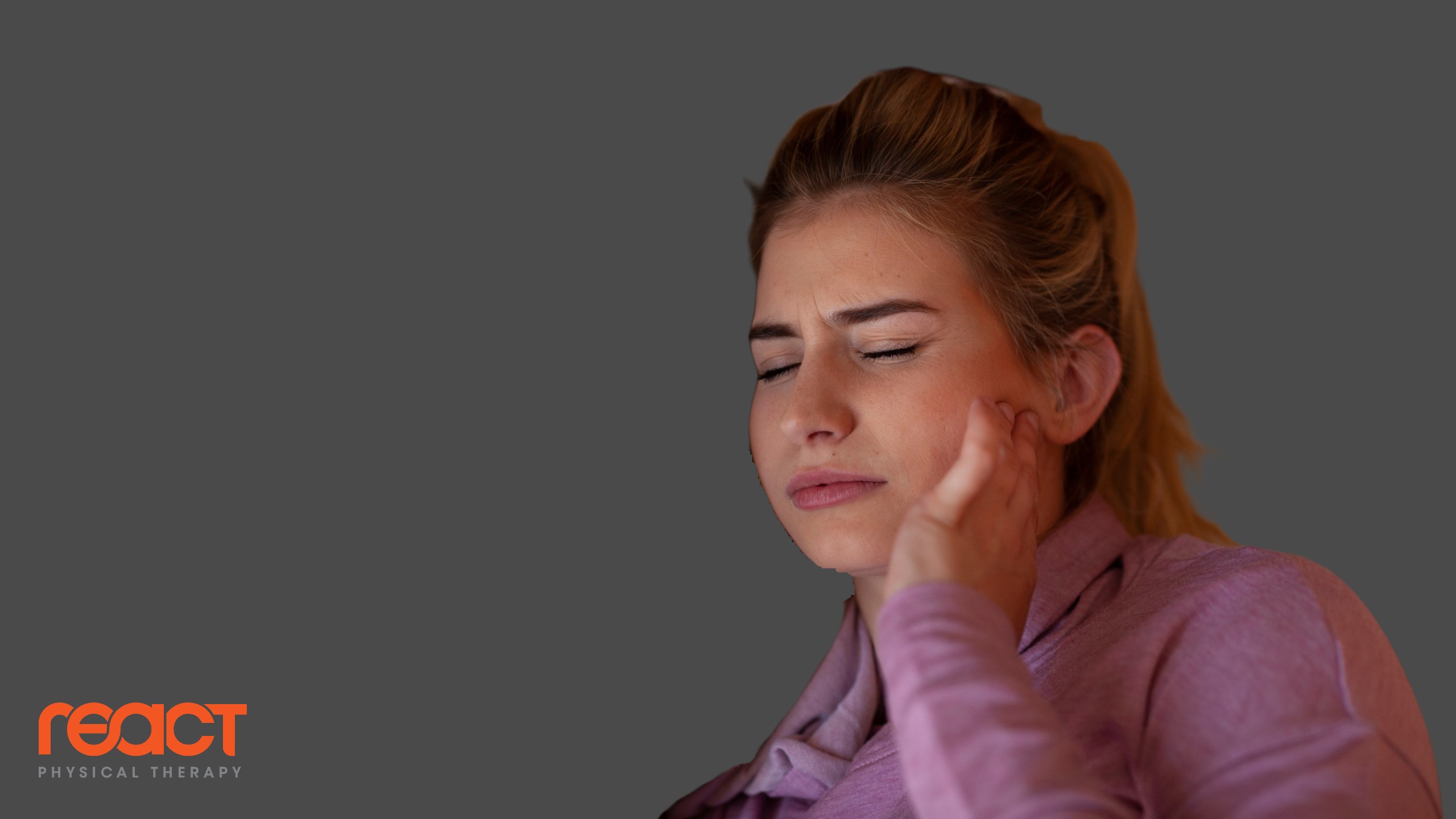Temporomandibular Joint (TMJ): The Small Joint That Can Cause Major Pain

Jaw pain can be unbearably debilitating. Imagine: you have knee pain. You may be able to avoid activities that aggravate the area of injury. But activities that aggravate TMJ injuries are unavoidable: talking, chewing, smiling, sleeping. It’s impossible to distance yourself from your face.
The temporomandibular joints (TMJ) are a set of joints that attach your jaw to your skull on either side face just below your ear. Dysfunction in one or both of these joints can cause not only jaw pain but a wide range of problems: clicking, popping, locking, inability to open your mouth, facial pain, headaches, pain in the teeth, damage and wear to the teeth.
However, there are absolutely things that you can do to help this pain. PTs that specialize in the TMJ can help decrease your pain and improve your function quickly.
Jaw Clicking
“My jaw clicks every time I open it.”
This is a common complaint I hear from patients and here’s the great news: often, this is NO BIG DEAL. The joint between your jaw and your skull is called the temporomandibular joint, aka the TMJ. There is a small piece of tissue that cushion this joint called the ‘articular disc.’ Often, this piece of tissue gets displaced and moves back and forth when you open your mouth, causing clicking and popping noises. If the clicking is painless, and you have full range of motion, the tissues around will usually adapt to this and you may never have any problems.
However, many people have pain associated with this clicking, and jaw problems can lead to a host of symptoms including jaw and face pain, headaches, and pain that refers into your teeth. If this is the case, or if you’re noticing a loss of range of motion when opening your jaw, physical therapy is a great way to effectively manage joint dysfunction.
Instant TMJ Relief
Here’s three tips I give almost all of my jaw pain patients:
- “Teeth apart and breathe” — With your mouth closed, separate your teeth slightly and take a deep belly breath. Jaw pain from hyperactive muscles can be significantly reduced with this simple mindful reset.
- Mandible wiggle: use your hand to jiggle your jaw side to side. This can be hard to relax your jaw enough for it to wiggle! This momentary relaxation and wiggling helps to disrupt over activation of the jaw muscles.
- Tongue position: “Clucking” and “Let your tongue relax” — Usually, resting tongue position should be resting on the roof of your mouth, but not touching your teeth. A good way to find this is to make a clucking noise, like a chicken! However, tongue position does actually vary a bit depending on the person, so if this is very unnatural it’s more important to think about letting your tongue relax into a resting position than forcing it too much.
For more blogs on TMJ from our team of experts click here.